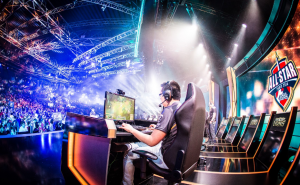In the future, eSports will rise even more strongly in this era of information technology, it may become the “king sport” of the modern world.
eSports is expanding its territory around the world, with numerous sponsorship, advertising and cooperation contracts appearing every day. Why do big brands invest in this segment, while in the past most did not care about the game industry? Is “traditional” sport accepting eSports?
To answer these questions, let’s compare eSports with the four most popular traditional sports in the US.
First of all, we find that the majority of American football fans are over the age of 35 (56%), while eSports fans are much younger, with 73% under 35 years old. As a result, eSports is most popular with Y generation men (those born during the period from the early 1980s to the early 2000s, the first generation to grow up with the commune media. Assembly). In fact, up to 22% of these groups regularly watch eSports, this ratio is even higher than ice hockey and baseball.

Three reasons why sports and consumer brands are investing in eSports
- Reaching out to “inviolable” subjects: Consumers aged 21 – 35 or younger receive media in a way that is completely different from older consumers. Games and eSports give them a lot more attraction and initiative than other forms of entertainment.
- The game has become a mass sport around the world: Just like other traditional sports, a large number of eSports audiences do not play games directly. Live broadcast services like Twitch have more than 100 million viewers a month, and the YouTube game category is as hot as the music category. ESports events can now attract about 100,000 attendees only during the weekend.
- In the process of becoming a “billion-dollar” industry: Sales of souvenirs, ticket sales, media licenses, advertising and eSport sponsorship are now approximately 0.5 billion. USD per year. If the sales per fan ratio is equal to the NBA, it will easily reach a total value of $ 2.5 billion this year, so the media and investors’ interest is understandable.
